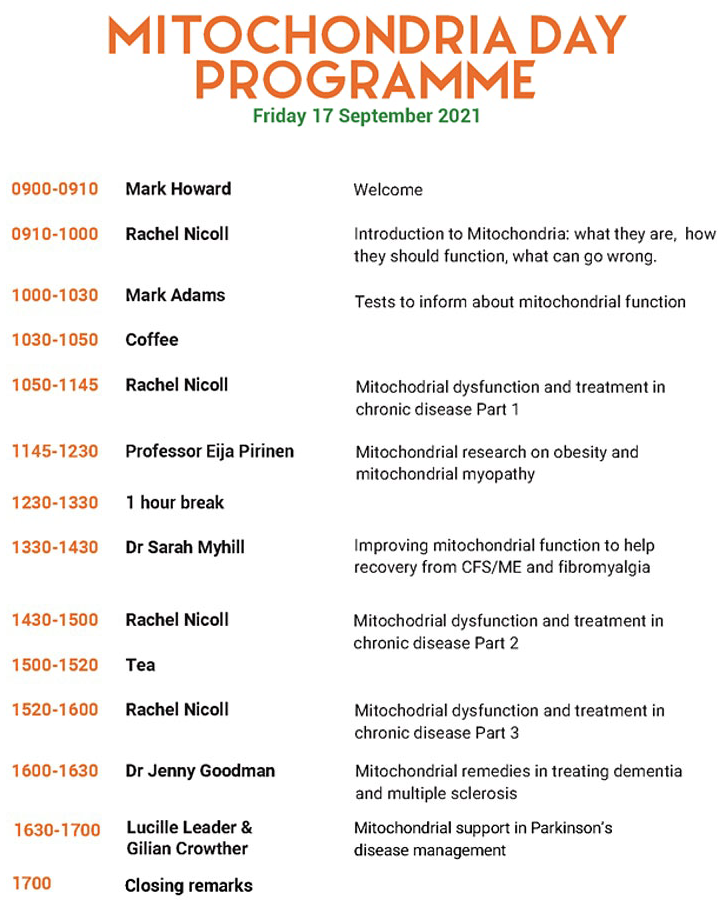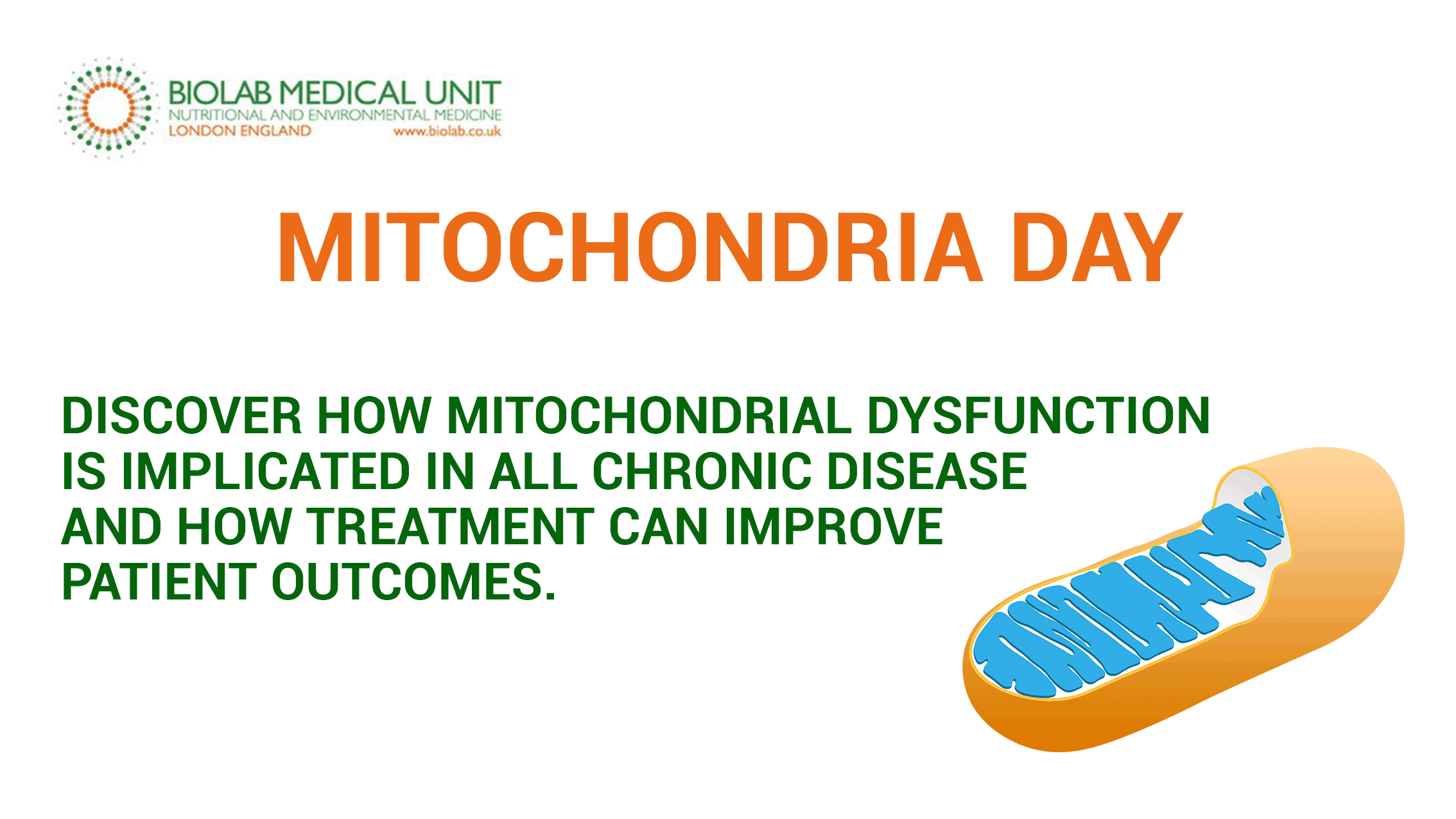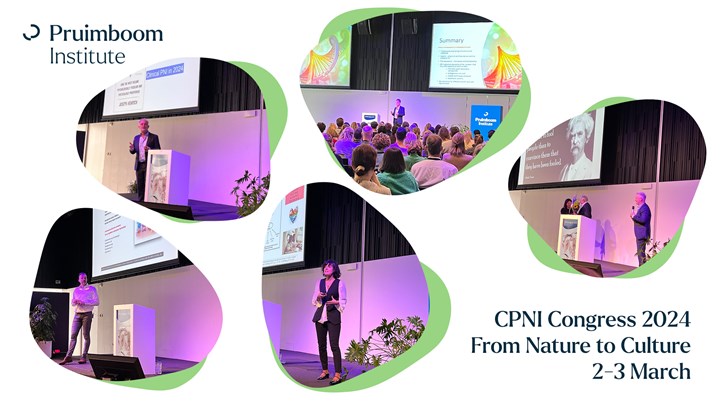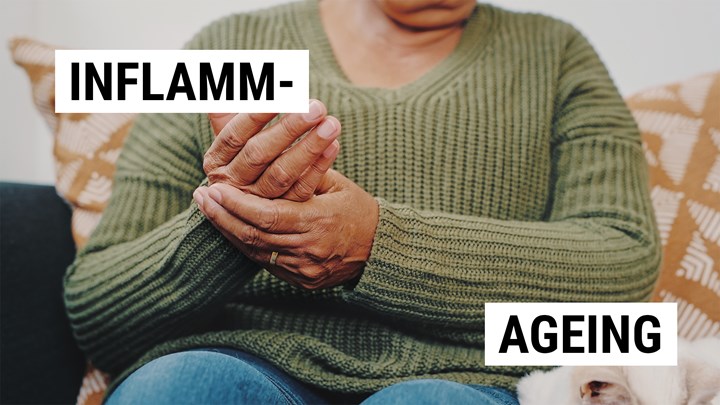Content Sections
Last Friday, 17th September 2021, was a landmark day in the ANH-Intl calendar. It was our first face to face medical conference in 18 months and it felt so good to be amongst people again. Judging by the beaming smiles on everyone’s faces we weren’t the only ones revelling in human contact again. It was a good reminder — not that anyone needs it — that we’re a sociable species and we’re not built to be isolated and locked away from other humans.
Like so many other events, Biolab Medical Unit’s Mitochondria Day for health professionals, had had to be postponed a few times. The event was the brainchild of Rachel Nicoll PhD, originally trained as a nutritionist, but now a medical researcher who has lectured in the UK on COVID-19 and environmental medicine. She has a special interest in all things mitochondria-related. It was touch and go as to whether it would end up online only, but thankfully, it was able to go ahead as an in-person event as well as being streamed online. Although not targeted at covid, the content couldn’t have been more topical (long covid, spike protein disease) — discovering how mitochondrial dysfunction is implicated in all chronic disease and how treatment can improve patient outcomes.
Mito, microbes and the powerhouse of life
We’re a bit passionate here at ANH about these tiny, precious, energy organelles in our cells and have written a fair bit about it over the years. The fact that there can be up to 10,000 mitochondria in each cell is living proof that dynamite really does come in small packages. Without our mitochondria we would be unable to create energy and sustain life. When they are impaired, damaged or dysfunctional the effects are felt system-wide, sometime with dire consequences for our health.
>>> Click here for a selection of ANH’s key mitochondria-related articles.
Mitochondria are a cogent reminder of our intimate connection to the world of microbes given their evolutionary bacterial origins.
Dr Nicoll, in her first presentation, shared that the current trending hypothesis is that the ‘endosymbiosis’ of mitochondria into our cells came from the fusion of:
- archaea (single-celled organisms without a nucleus or any organelles), the most ancient organisms so far discovered, which engulfed
- α-proteobacteria (ditto), which were aerobic, enabling the host to thrive in an oxygen-rich environment.
Mitochondria were once free-living bacteria which adapted to life within cells around 2 billion years ago. This is why conventional treatments designed to wipe out bacteria can have a deleterious effect on our mitochondria as well. Interestingly, unlike other cells, mitochondria still retain a fragment of an independent genome that denotes their previous free existence. More interesting is that this fragment comes from only one parent.
"The mitochondrial genome is inherited from our mothers alone, in her egg cells; the father’s mitochondrial genome, in the sperm, is destroyed. That sexual asymmetry is nearly universal across complex life, and is one of the deepest distinctions between the sexes—females pass on their mitochondria, males do not, even in the microscopic, single celled organisms where there is no other visible difference between the sexes." - Prof Nick Lane: “Power, Sex, Suicide. Mitochondria and the meaning of life”. Second Edition, 2018. Oxford University Press.
A collection of clinical pearls
Hopefully that introduction has whet your appetite for more on mitochondria. If you’re a health professional, we will soon have the link available to purchase a recording of the conference. But in the meantime, and for the lay public, here are some of the key points from three of the speakers to help you become more aware of your own powerhouses and why they need such careful nurture.

Rachel Nicoll PhD - key points drawn from her 4 presentations
- Neurons and cells in cardiac and skeletal muscle, liver and brown adipose tissue (BAT) have the greatest number of mitochondria. Red blood cells and skin cells have no mitochondria. Women’s egg cells (oocytes) have hundreds of thousands of mitochondria
- Fatty acids are a more efficient fuel, with ketones (made in the liver from fats) being preferred as they produce >20% ATP (energy molecules) with far less free radical damage
- Regular exercise is imperative for optimum mitochondrial function because it creates the demand for energy (ATP) that keeps all the energy-system mechanisms flowing correctly
- Adequate intake of magnesium is critical for proper functioning of ATP molecules
- The gut microbiota and mitochondria have a common bacterial ancestral heritage. What’s good for the gut (fibre) is good for mito, whereas intestinal permeability and dysbiosis is associated with mitochondrial dysfunction and free radical damage
- Therapies that demonstrate good evidence for improving mitochondrial function:
- Diet - caloric restriction; fasting; ketogenic diets (best to cycle between ketogenic and low GL healthy carbs to keep mito flexibility)
- Exercise - endurance and high intensity interval training (HIIT)
- Hyperbaric oxygen
- Therapeutic hypothermia (cold therapy)
- Near infrared radiation
- Pulsed electromagnetic fields (particularly for diabetic foot ulcers and pain relief)
- Mitochondrial dysfunction is at the core of metabolic (obesity, type 2 diabetes, insulin resistance), neurodegenerative disease (brain vulnerabilities, Alzheimer’s Disease, dementia, Parkinson’s), cancer and cardiovascular disease
- The results of Dr Nicoll’s research into mitochondrial therapeutic remedies and all references are available in her slides.
Prof Eija Pirinen PhD, University of Helsinki, Finland - Mitochondrial research on obesity and mitochondrial myopathy
- Evidence suggests that nutritional interventions can delay and even prevent the development of diseases with mitochondrial effects
- Vitamin B3 is critical to make NAD+, the important cofactor for mitochondrial energy production - caloric restriction, fasting and exercise all increase vitamin B3-dependent NAD+ biosynthesis
- In obesity and its related metabolic diseases, a defect in mitochondrial function is likely acquired via excess calorie intake and a sedentary lifestyle. The higher the mitochondrial oxidative capacity in fat (adipose) tissue, the more successful is the weight loss in response to conservative weight loss treatment. Conventional weight loss treatments (diets) inhibit mitochondrial oxidative capacity
- The supplement, nicotinamide riboside, is an actively studied vitamin to rescue mitochondrial function in obesity.
Dr Sarah Myhill MD - Improving mitochondrial function to help recovery from CFS, ME and fibromyalgia
- Dr Myhill considers CFS (chronic fatigue syndrome), ME (myalgic encephalomyelitis) and fibromyalgia as clinical pictures, not diagnoses. This is an important differentiation because it implies the need to identify the underlying mechanisms in order to manage the symptoms appropriately
- Poor energy delivery mechanisms are implicated in mitochondrial disorders and can be illustrated by the following car analogy:
- Diet (fuel)
- Mitochondria (engine)
- Thyroid (accelerator pedal)
- Adrenals (gear box)
- If we spend more energy than we can generate, we die. Symptoms, such as those presenting with CFS, ME and fibromyalgia are protective in order to stop us ‘spending’ too much energy. Symptom suppression with drugs and addictions should be avoided at all costs. They are signposts on our roadmap for recovery. To recover you must always ask the question, Why?
- Improving the energy delivery mechanisms must be done in the correct order:
- First - fuel in the tank (paleo-ketogenic diet, basic nutritional supplements, address poor gut function and ensure sufficient intake to avoid survival mode response to famine)
- Second - address mitochondrial function (ketones, micronutrients, poor sleep, toxicity)
- Thirdly - address any dysfunction in the thyroid and/or adrenals (most likely both) and fine tune the 'CFS orchestra'
- Pace appropriately throughout and address any other ‘energy holes’ eg. emotional, immunological, toxicity related
- Expect a bumpy ride and be satisfied with gentle progress!
- Mitochondrial raw materials include magnesium, CoQ10, niacinamide (flush free vitamin B3, can also use nicotinamide riboside), acetyl L carnitine, vitamin B12 and D Ribose (as this is a sugar, it has to be included in carb count as it will affect ketone levels)
- Dr Myhill has written a number of books on this, and many other subjects. Visit: Books and Workshops for further information
“Hypthyroidism is one of the worst diagnosed and worst treated conditions in the UK. Dr Kenneth Blanchard, consultant endocrinologist, reckons that 20% of all Western women are hypothyroid. This concurs with my clinical experience that hypothyroidism is hugely under diagnosed. This is a major source of misery with disease and premature death. How has this situation been allowed to happen? The main reason is that doctors are only interested in blood tests and ignore the patient’s symptoms. This is very poor medical practice - any patient with a CFS may be hypothyroid- indeed I suspect the majority are.” - Dr Sarah Myhill
We’ve barely scratched the surface of the information imparted on the day. It’s such an important subject area as the mitochondria are the common denominator in all chronic disease - well, pretty much in all dysfunction pre-disease as well. If you are a health professional then this entire conference represents very relevant CPD/CME, but particularly if you are working with patients with metabolic, inflammatory, fatigue or neurodegenerative conditions.
Being a health practitioner is akin to being a detective. Whilst a lot can be achieved by taking a thorough medical history and profiling symptoms, there are times when functional testing is a necessary sleuthing aid. Mitochondrial testing isn’t always straightforward as timing is such an issue in the disease progression. As this was hosted by the Biolab Medical Unit, the delegates benefited in particular from the information on mitochondrial-related functional testing by clinical biochemist, Mark Adams.
>>> Speaker bios
In closing, some lesser known mito facts
- As the eyes have a very high concentration of mitochondria, their dysfunction causes the loss of ability to perceive subtle shades of grey - of which there are around 50!
- A camel’s hump contains fat not water. They can live without water for weeks because there is so much fat to burn, which produces the water they require - they don't store water
- Most of the antioxidants you take can’t penetrate the outer mitochondrial membrane which is why they produce their own supply
- Caffeine can directly increase fatty acid oxidation (fat burning) and can also promote the production of new mitochondria (biogenesis)
- Mitochondrial DNA is circular - unlike the nuclear DNA double helix we’re used to seeing in other cells - and is very specific to race, family and era
- Wondering what happens to the paternal mitochondrial DNA in the sperm? Well, it’s located in the tail, which drops off as soon as the egg is fertilised. In mitochondrial terms, the male is apparently a genetic dead end!
- The mitochondrial genome is evolving more than 50 times faster than our personal nuclear genome, leading Prof Nick Lane to consider whether they’re actually the “clandestine rulers of the world”?
Our thanks to Dr Rachel Nicoll, the Biolab team and all the speakers for being the first to get the show back on the road again and for the content, which has far reaching ramifications for everyone, but particularly now.
Further mitochondrial reading from ANH
-
Mito & the mechanics: your DIY health insurance
-
Stand and let your mitochondria be counted
-
Enhance metabolic flexibility and burn more fat
-
ANH-Intl Feature: fuel efficiency and the Food4Health plate
- And a fabulous 3-minute routine to fit into your day a few times to trigger the production of new mitochondria. The old adage, "Use it before you lose it" could have been created with our mitochondria in mind!
>>> Return to the homepage








Comments
your voice counts
There are currently no comments on this post.
Your voice counts
We welcome your comments and are very interested in your point of view, but we ask that you keep them relevant to the article, that they be civil and without commercial links. All comments are moderated prior to being published. We reserve the right to edit or not publish comments that we consider abusive or offensive.
There is extra content here from a third party provider. You will be unable to see this content unless you agree to allow Content Cookies. Cookie Preferences